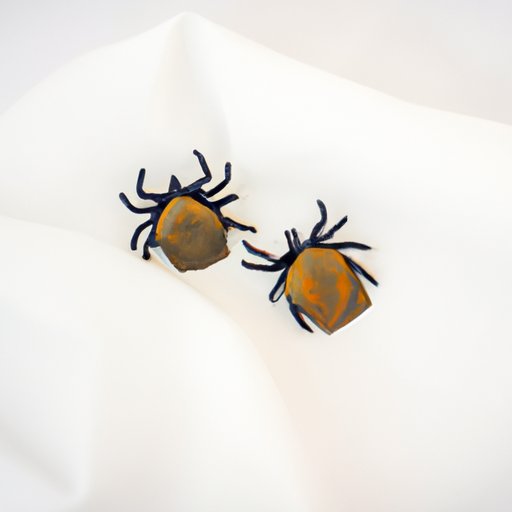
I. Introduction
Bed bugs are small, reddish-brown insects that feed on human blood. They can be a nightmare to deal with and are prevalent in households all over the world. In this article, we will explore different methods for treating bed bugs, including natural remedies, professional pest control treatments, and tips for preventing bed bugs from entering your home. We’ll also discuss the importance of properly identifying and differentiating bed bugs from other household pests.
II. Natural Remedies for Treating Bed Bugs
If you’re looking for an eco-friendly and cost-effective way to treat bed bugs, home remedies can work wonders. Heat treatment is an effective way of killing bed bugs, and you can do it by washing and drying your bedding, clothes, and any other infested items on a high heat setting. Essential oils such as lavender, tea tree, and peppermint can also repel bed bugs due to their natural insecticidal properties. You can apply them directly to infested areas or mix them with water and spray. Diatomaceous earth, a fine powder made from fossilized algae, can also kill bed bugs by dehydrating their exoskeleton. Simply dust it on infested areas and vacuum up the remaining powder after a few days. It’s important to use these remedies safely and effectively to avoid any adverse health effects.
III. How to Prevent Bed Bugs in Your Home
Preventing bed bugs from entering your home is crucial to avoid the headache of treating an infestation. Take precautions by sealing up cracks and crevices, vacuuming your home regularly, and minimizing clutter in your living spaces. Don’t place any infested items on furniture or other surfaces that make it easy for bed bugs to move around your home. Use bed bug-proof encasements for your mattress and box spring, which will trap any bed bugs inside and make it impossible for them to feed on you. Bed bugs can travel through walls and electrical outlets easily, so it’s crucial to take steps to prevent spreading to other areas of your home.
IV. The Do’s and Don’ts of Treating Bed Bugs
When you discover bed bugs, it’s natural to try and take matters into your own hands and attempt a DIY treatment. However, this can be dangerous and counterproductive. DIY treatments can often make the infestation worse by spreading bed bugs to other areas of your home. Instead, identify the bed bugs accurately and understand their behavior before taking action. One of the best things you can do is seek professional help from a pest control company with experience treating bed bugs. They have the expertise and equipment needed to effectively eliminate bed bugs.
V. How Professional Bed Bug Treatments Work
If you’re dealing with a severe bed bug infestation, it’s best to get professional pest control treatment. Experts use a range of techniques such as chemical treatments, steam cleaning, and fumigation to eliminate bed bugs. Chemical treatments typically involve spraying a solution directly to infested areas, while steam cleaning kills bed bugs by exposing them to high temperatures. Fumigation is a method where the entire structure is sealed, and gas is released to kill bed bugs and their eggs. It’s important to choose a reputable pest control company, and ask about their methods and safety protocols before hiring them.

VI. The Importance of Properly Identifying Bed Bugs
Bed bugs are often mistaken for other household pests such as fleas, ticks, and carpet beetles. It’s important to identify bed bugs accurately to avoid using the wrong treatment methods and wasting time and money. Bed bugs have a distinct flat, oval shape, and are usually reddish-brown in color. They are most active at night and will hide in bedding, cracks, and crevices during the day. If you’re unsure if you’re dealing with bed bugs, consult with a pest control professional.
VII. Steps to Take After Treating Bed Bugs
After a successful bed bug treatment, it’s important to take steps to prevent re-infestation and clean and disinfect your home. Dispose of any infested items that can’t be salvaged, such as heavily infested mattresses or furniture. Use a vacuum with a HEPA filter to clean all surfaces and cracks and crevices in your home. Wash and dry bedding and clothes on high heat, and place them in sealed bags to avoid re-infestation. Keep your home clean and clutter-free to avoid areas where bed bugs can hide.
VIII. How Travelers Can Prevent Bringing Bed Bugs Home
If you travel frequently, there’s a high chance you’ll encounter bed bugs. Protect yourself by inspecting your hotel room for bed bugs before settling in and keeping your luggage elevated and off the ground. Use a bed bug-proof encasement for your luggage and avoid placing it directly on the hotel bed. When you return home, inspect your luggage and clothing for any signs of bed bugs, and wash and dry all your clothes on high heat.
IX. Conclusion
Treating bed bugs is a daunting task, but it’s essential to take quick and effective action to prevent further spreading and infestations. Natural remedies like heat treatment and essential oils can be used to treat early infestations. Taking preventive measures like decluttering your home or using bed bug-proof encasements can help keep bed bugs away. If the infestation is too severe, it’s best to consult with a pest control professional. By following these tips, you can ensure that your home stays bed bug-free for years to come.





